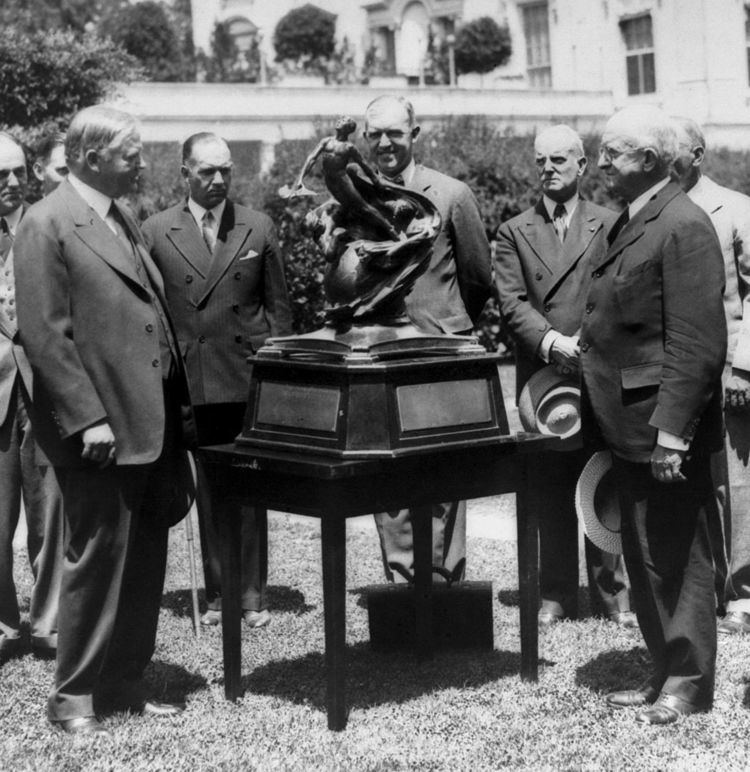 | ||
The Collier Trophy is an annual aviation award administered by the U.S. National Aeronautic Association (NAA), presented to those who have made "the greatest achievement in aeronautics or astronautics in America, with respect to improving the performance, efficiency, and safety of air or space vehicles, the value of which has been thoroughly demonstrated by actual use during the preceding year."
Robert J. Collier, publisher of Collier's Weekly magazine, was an air sports pioneer and president of the Aero Club of America. He commissioned Baltimore sculptor Ernest Wise Keyser to make the 525 pound (240 kg) trophy in 1911, it was originally named the Aero Club of America Trophy. Collier also was the owner of a Wright Model B biplane which he purchased in 1911. After presenting it several times, Collier died in 1918 after the end of World War I.
It was renamed in his honor in 1922 when the Aero Club dissolved, and the award was taken over in 1923 by its replacement the NAA. The name became official in 1944, and the award presented once a year by the NAA president, with the trophy on permanent display at the U.S. National Air and Space Museum. As such, the trophy was in the custody of its 1969 co-recipient Michael Collins during his directorship of the museum.
The trophy was stolen briefly in 1978, but was recovered.
